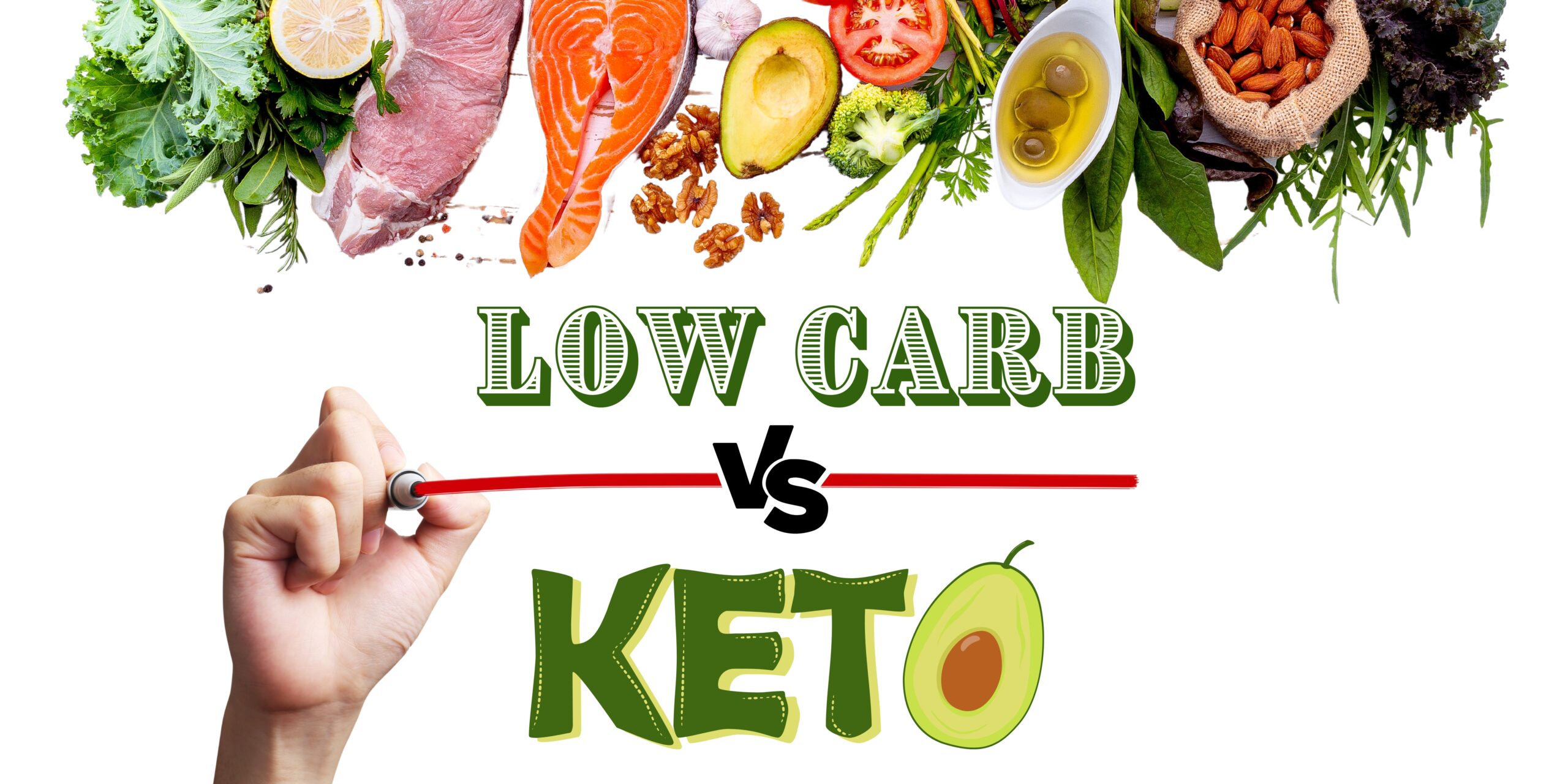So, you’ve seen people on Facebook and Instagram showing stories of their weight loss journeys and sharing delicious recipes they’ve eaten to achieve their goals. You see they are following a keto or low carb lifestyle and are really interested, but have no clue what that means or what it entails. If you’ve considered following a low carb diet but are unsure about the difference between that and a keto diet, you’re not alone. With the rise in popularity of both diets, it can be confusing to differentiate between them. While both diets focus on reducing carbohydrates, they have distinct differences that can impact their overall effectiveness and potential health benefits. As someone who has tried both diets, I’m here to share my insights on the key differences between the two. Keep reading to discover which diet may be best for your health goals and lifestyle.
The Keto Diet:
The ketogenic diet, or keto diet for short, is a very low carb, high fat diet that is designed to put your body into a state of ketosis. This metabolic state is achieved when your body burns fat for fuel instead of carbohydrates. To reach this state, the keto diet typically restricts carbohydrate intake to 20-50 grams per day and encourages high fat and moderate protein consumption. This can be achieved by eating foods like meats, cheese, nuts, and healthy oils. The less carbs you consume, the higher your chance of reaching ketosis. Of course, this differs person to person, so you’ll need to figure out what does and does not work for your body. For example, I was able to achieve a state of ketosis while eating a handful worth of nuts a day, however I knew someone who had to completely eliminate nuts before she could achieve ketosis.
The Low Carb Diet:
On the other hand, a low carb diet is more flexible and doesn’t necessarily aim to achieve ketosis. While the amount of carbs allowed on a low carb diet can vary, it generally involves limiting carbs to around 100-150 grams per day or less. This can be achieved by reducing intake of foods like bread, pasta, rice, and sweets, while still allowing for a variety of other foods like low glycemic fruits, vegetables, and proteins.
The Main Difference:
The main, but not the only, difference between the keto diet and low carb diet is the level of carbohydrate restriction. The keto diet is much more restrictive, aiming to achieve ketosis, while a low carb diet allows for more flexibility in carbohydrate intake. Additionally, while both diets encourage the consumption of healthy fats and protein, the keto diet typically requires higher fat intake to achieve ketosis and feel satiated for longer.
Ultimately, the best diet for you will depend on your individual health goals and needs. If you’re looking to lose weight quickly or have a health condition like type 2 diabetes or epilepsy, the keto diet may be a good option. However, if you’re looking for a more flexible approach that still limits carbs, a low carb diet may be a better fit. Whatever your choice, it’s important to consult with a healthcare professional to ensure you’re meeting your nutritional needs and staying healthy.
By getting the right support and guidance, you can successfully transition to a low carb or keto diet and start experiencing their many benefits. If you need any help, don’t be afraid to ask – I’m here to support you on your journey!







Leave A Comment